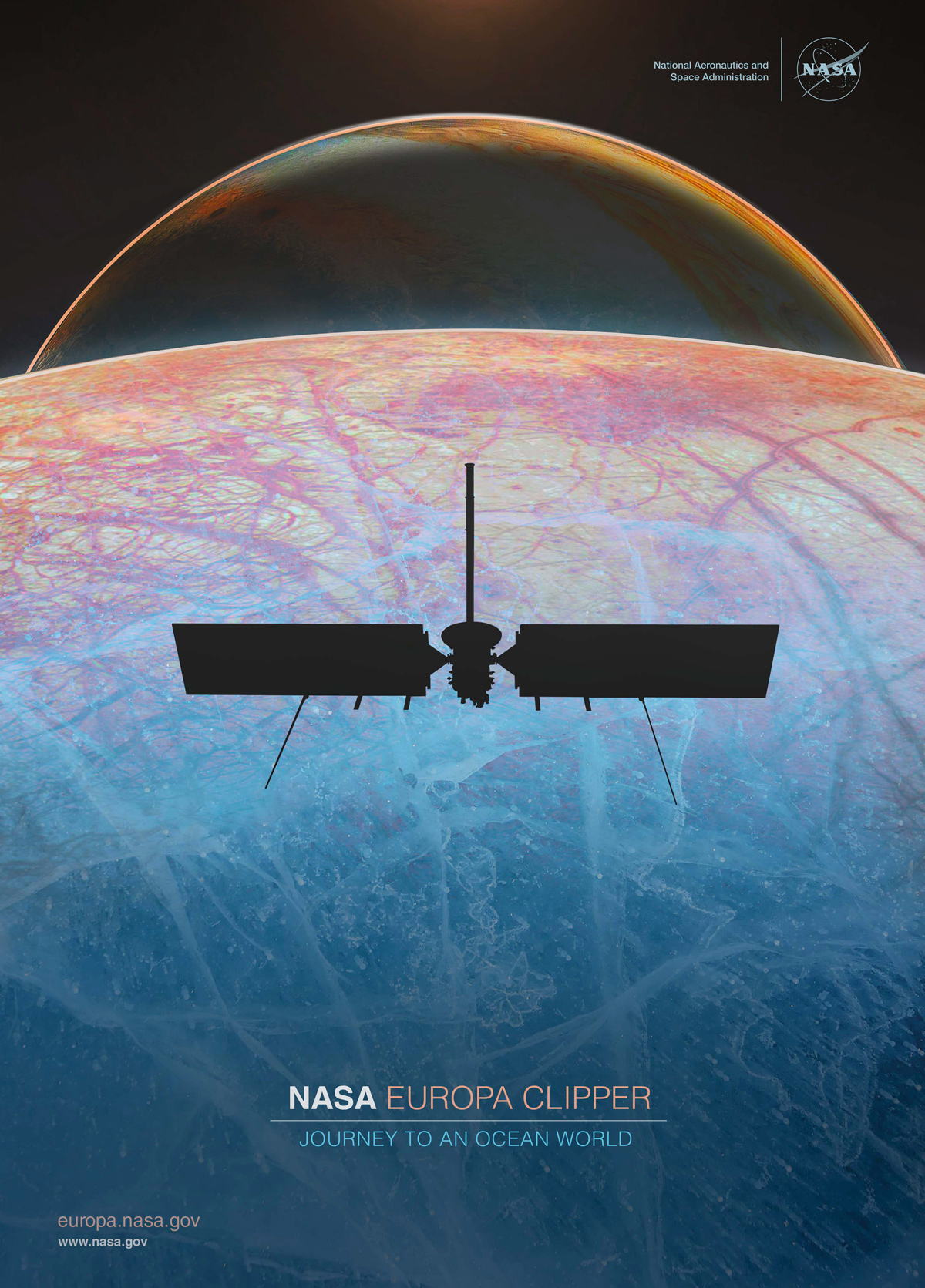In this decade and the next, some very impressive missions will take place. For instance, NASA will send its robotic Europa Clipper orbiter investigate Jupiter’s icy moon Europa for the first time. The orbiter will launch sometime in the middle of the decade (likely 2024) and arrive in the Jovian sytem in the 2030s to look for possible signs of life.
In preparation for this momentous event, NASA recently released a stunning new mission poster. As you can see, the poster features the orbiter looking down on Europa’s icy surface with Jupiter hanging in the background. The orbiter itself is in shadow so as to draw attention to the landscape beneath it.
This helps to relate the importance of the Europa Clipper‘s mission, which will be to investigate the composition, chemistry, energy, and interior ocean of this icy moon – and thus determine if it could support life. In this respect, the mission will answer questions that have plagued astronomers ever since the Voyager probes passed through the system in 1979.

It was these missions that took the first high-quality images of the moon’s surface, which hinted at the presence of a liquid ocean underneath. Since then, only one mission has been to Jupiter and studied its large moons directly. This was the Galileo mission, which orbited Jupiter for almost eight years and obtained data that bolstered the case for any interior ocean.
The next mission to do this was Juno, which arrived around Jupiter in 2016 and will continue to study its atmosphere, magnetosphere, and interior environment. The mission will end in July of next year when the spacecraft will crash into the planet’s atmosphere. While the spacecraft managed to obtain data on Io’s volcanism and the first images of Ganymede’s polar regions, it did not study the Jovian moons in depth.
That will change when the Europa Clipper and the ESA’s JUpiter Icy Moons Explorer (JUICE) arrive in the system. When the NASA mission launches in 2024, the Clipper will spend six years in space and the subsequent four orbiting Jupiter. This orbit will allow the Clipper to conduct 45 low-altitude flybys of Europa, studying its surface with every pass.
To do this, it will rely on a suite of advanced instruments that includes an ice-penetrating radar, a short-wave infrared spectrometer, a topographical imager, and an ion- and neutral-mass spectrometer. These tools are essential to learning what lurks beneath Europa’s ice, the composition of this ice, and how much energy reaches the surface from the interior.
Another major objective for the mission is to take detailed images of the surface so astronomers back on Earth can select possible sites for a future Europa Lander mission. This mission (the date of which is TBD) will set down at a site selected for its potential to have biosignatures and then collect samples from about 10 cm (4 inches) beneath the surface.
In this decade and the next, there are some bold plans for space exploration that are garnering quite a bit of attention. Much of that attention is focused on Project Artemis, which will see astronauts return to the Moon for the first time since the Apollo Era. They’ll be joined by multiple space agencies, all of whom are dedicated to creating a lasting presence on the Moon.
There’s even the long-term plan to send astronauts to Mars by the 2030s. Here too, the search for extraterrestrial life continues. By February of 2021, this search will include the Perseverance rover, which will be the first mission to collect samples on Mars and leave them in a cache for a later retrieval and return mission to Earth. Analysis of these samples will help answer the question of whether there was (or is) life on Mars!
An exciting decade lies ahead of us, to be followed by an even more exciting one! While we’re waiting, be sure to check out this video of the Europa Clipper mission and the search for extraterrestrial life, courtesy of NASA JPL:
Further Reading: NASA

